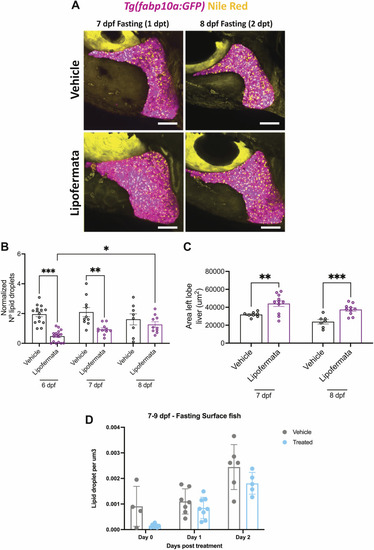Figure S3.
- ID
- ZDB-FIG-240315-99
- Publication
- Pozo-Morales et al., 2024 - Starvation-resistant cavefish reveal conserved mechanisms of starvation-induced hepatic lipotoxicity
- Other Figures
- All Figure Page
- Back to All Figure Page
|
Accumulation of hepatic lipid droplets after removal of lipofermata. |

